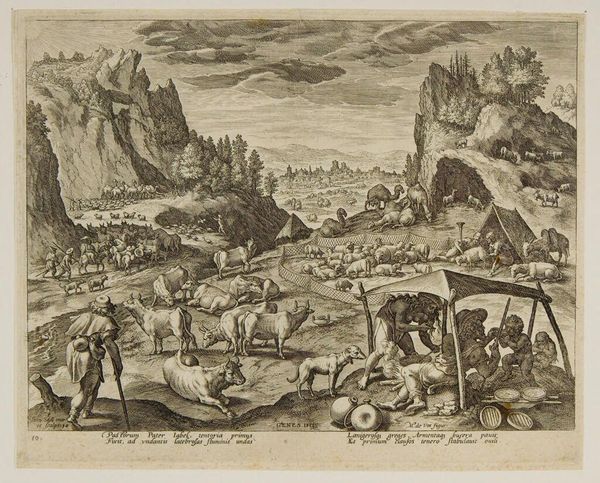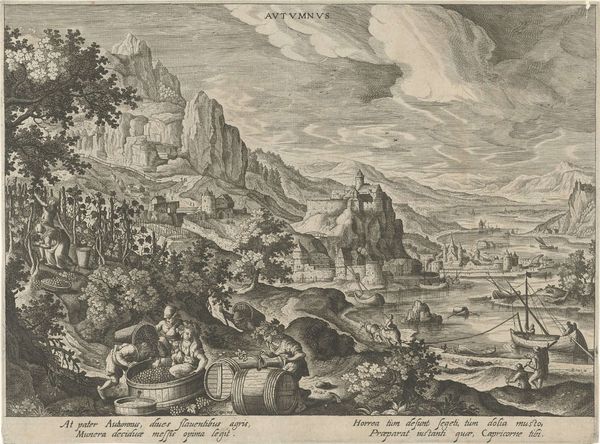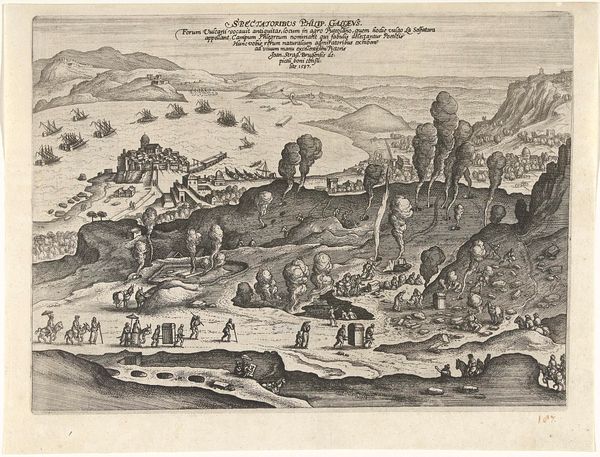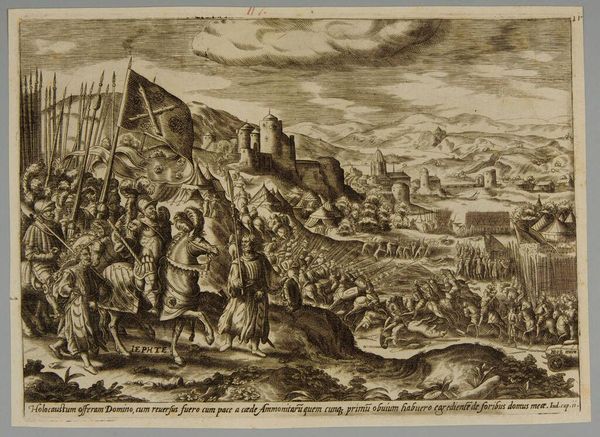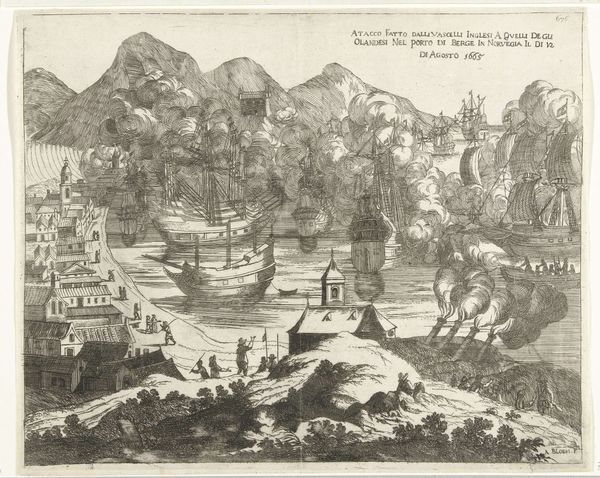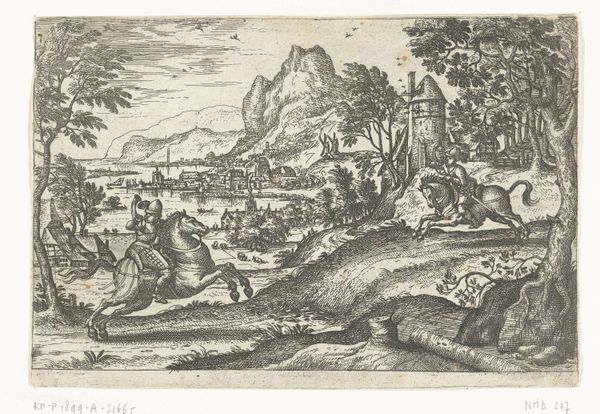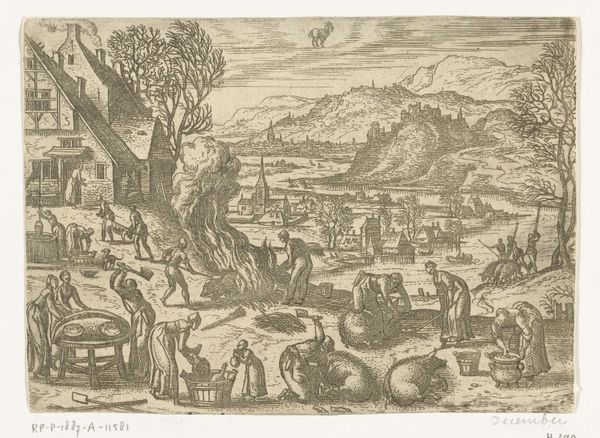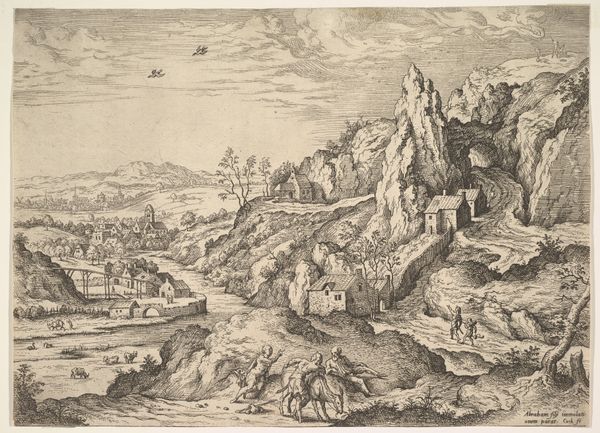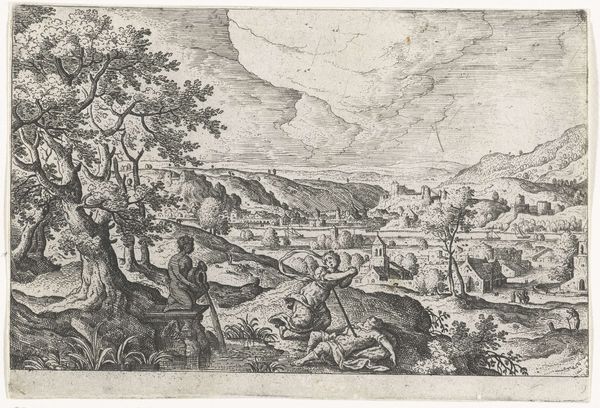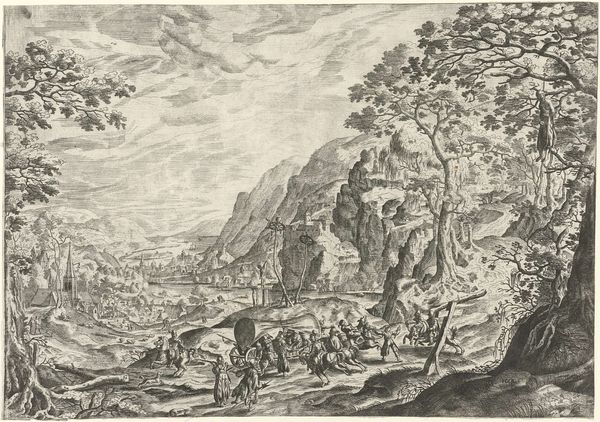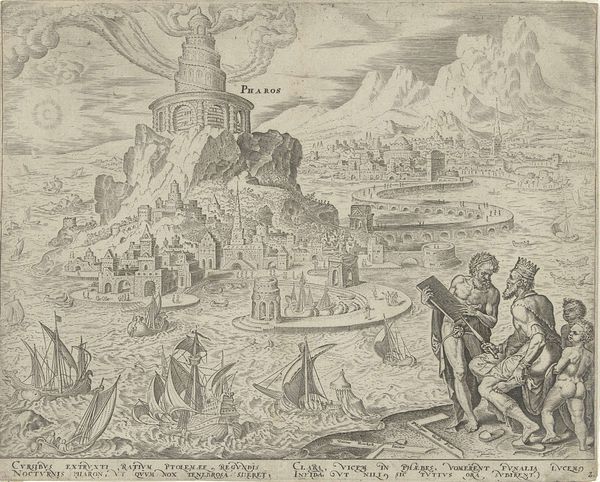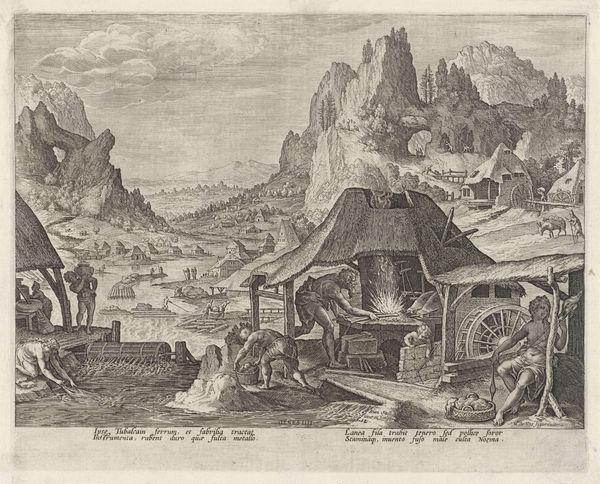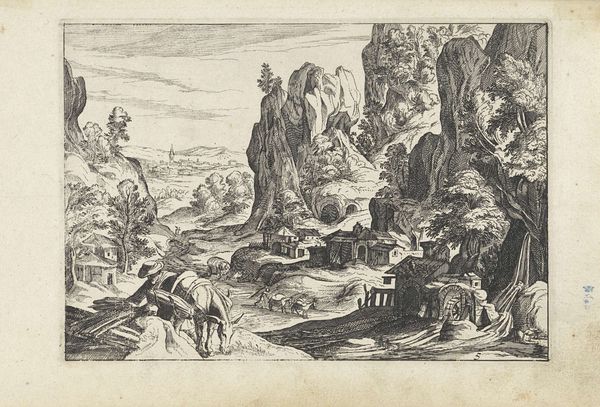
print, engraving
# print
#
pen sketch
#
landscape
#
genre-painting
#
northern-renaissance
#
engraving
Dimensions: height 201 mm, width 250 mm
Copyright: Rijks Museum: Open Domain
This print, made by Johann Sadeler around 1600, presents a scene of Jabal and his family resting with their livestock. It's an engraving, a process where lines are incised into a metal plate, which is then inked and printed. The medium itself speaks to a burgeoning print culture at the time, making images and ideas more widely accessible. Notice how the engraving technique allows for precise detail. The texture of the animals' fur, the folds in the tents, and the distant city are all meticulously rendered. This wasn't just about artistic expression; it was also about commerce. Prints like these were often made for reproduction, catering to a growing market for images. Think about the labor involved – the engraver's skilled hand, the workshop where these prints were produced, and the distribution networks that carried them across Europe. Even in this seemingly pastoral scene, we can see the workings of a pre-industrial economy, where art and commerce were deeply intertwined. Understanding these aspects helps us appreciate the print as more than just an image. It becomes a window into the social and economic world of its time, reminding us that art is always connected to the context in which it is made.
Comments
No comments
Be the first to comment and join the conversation on the ultimate creative platform.

